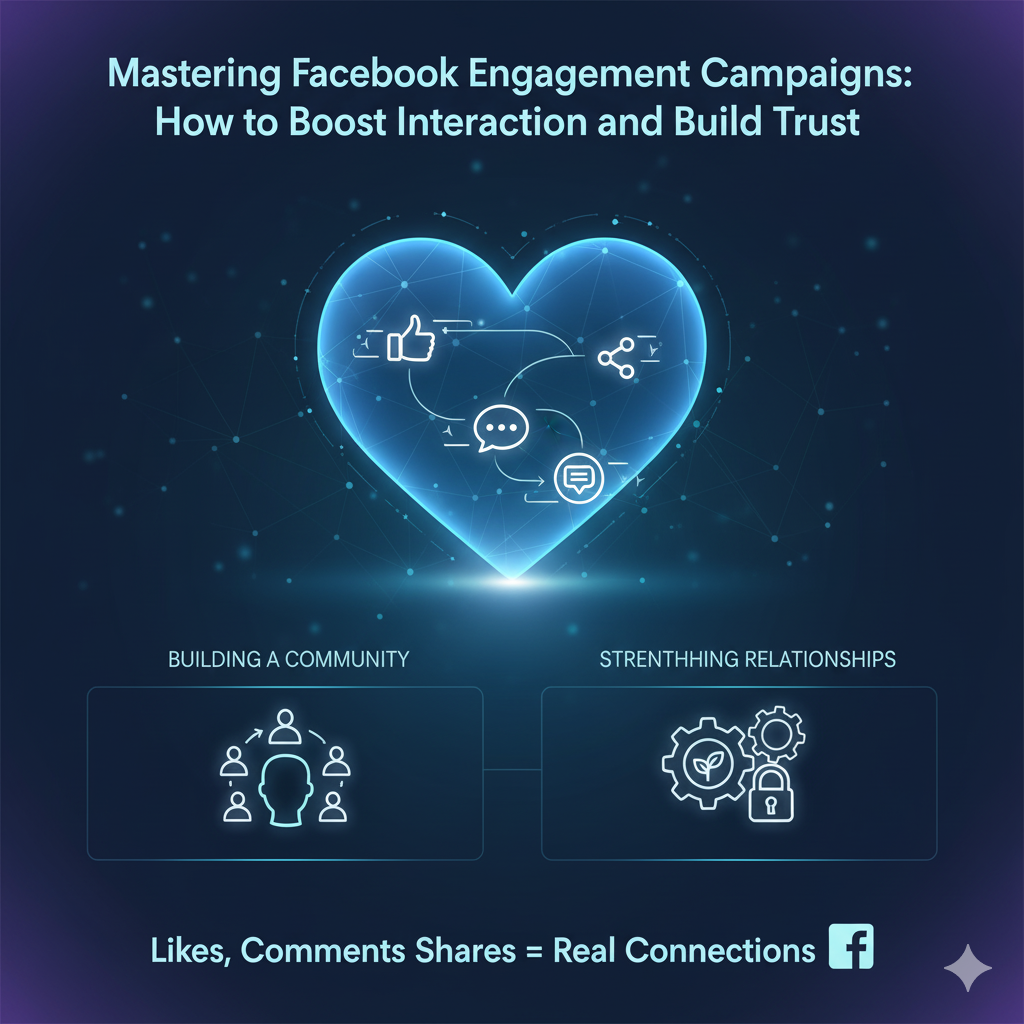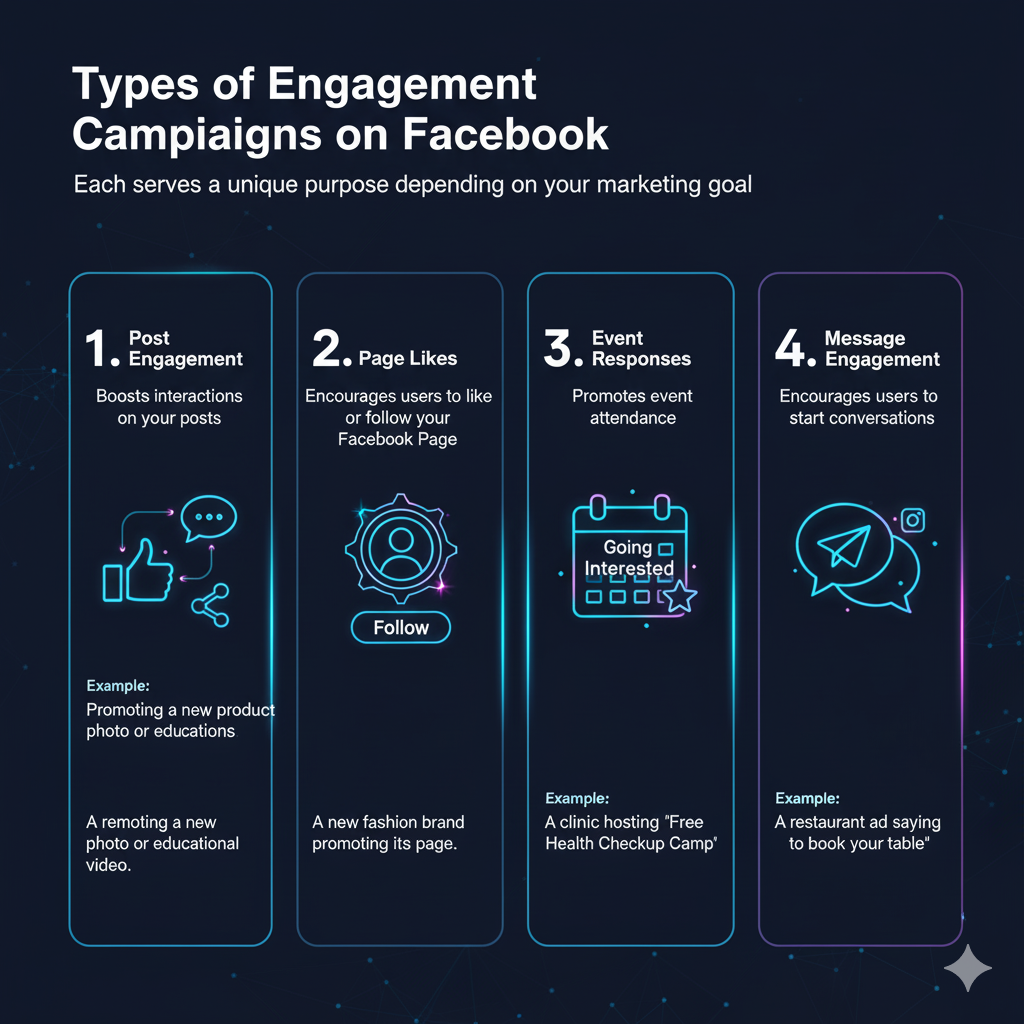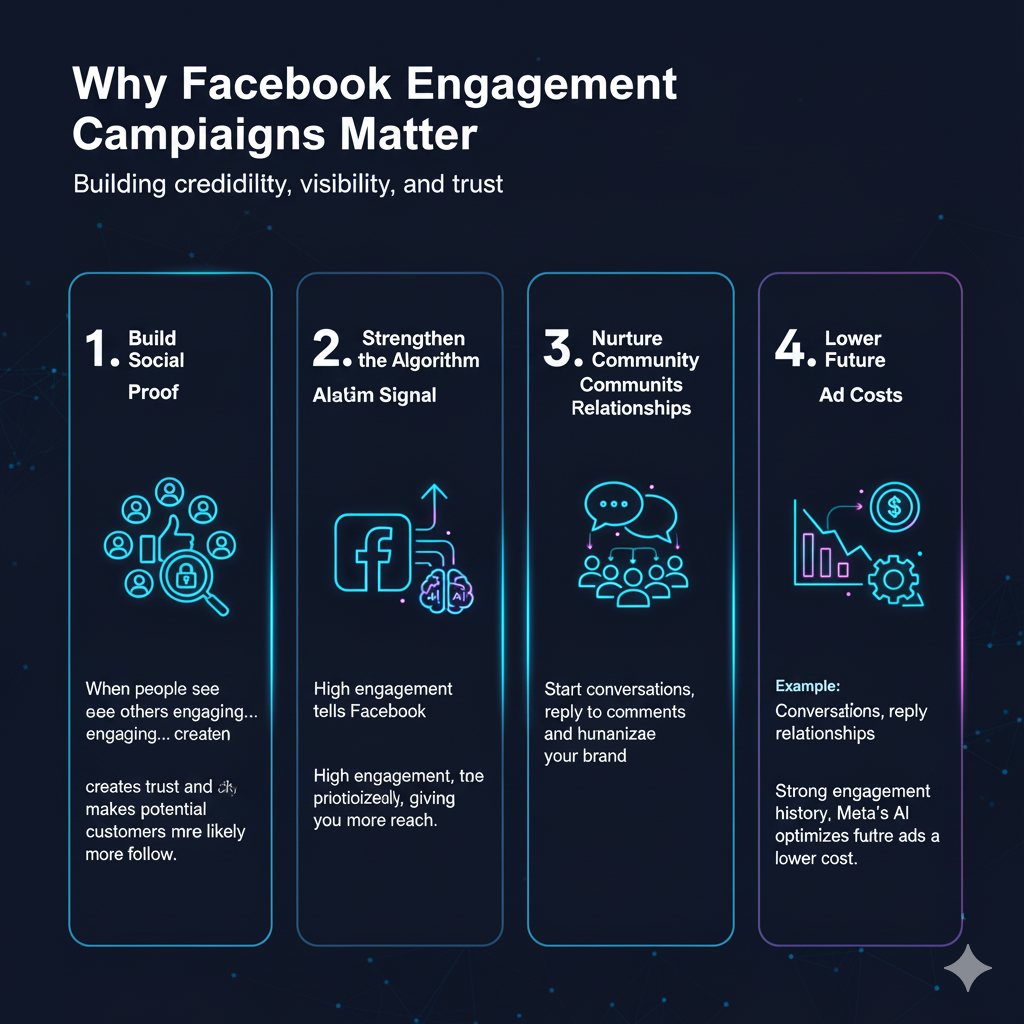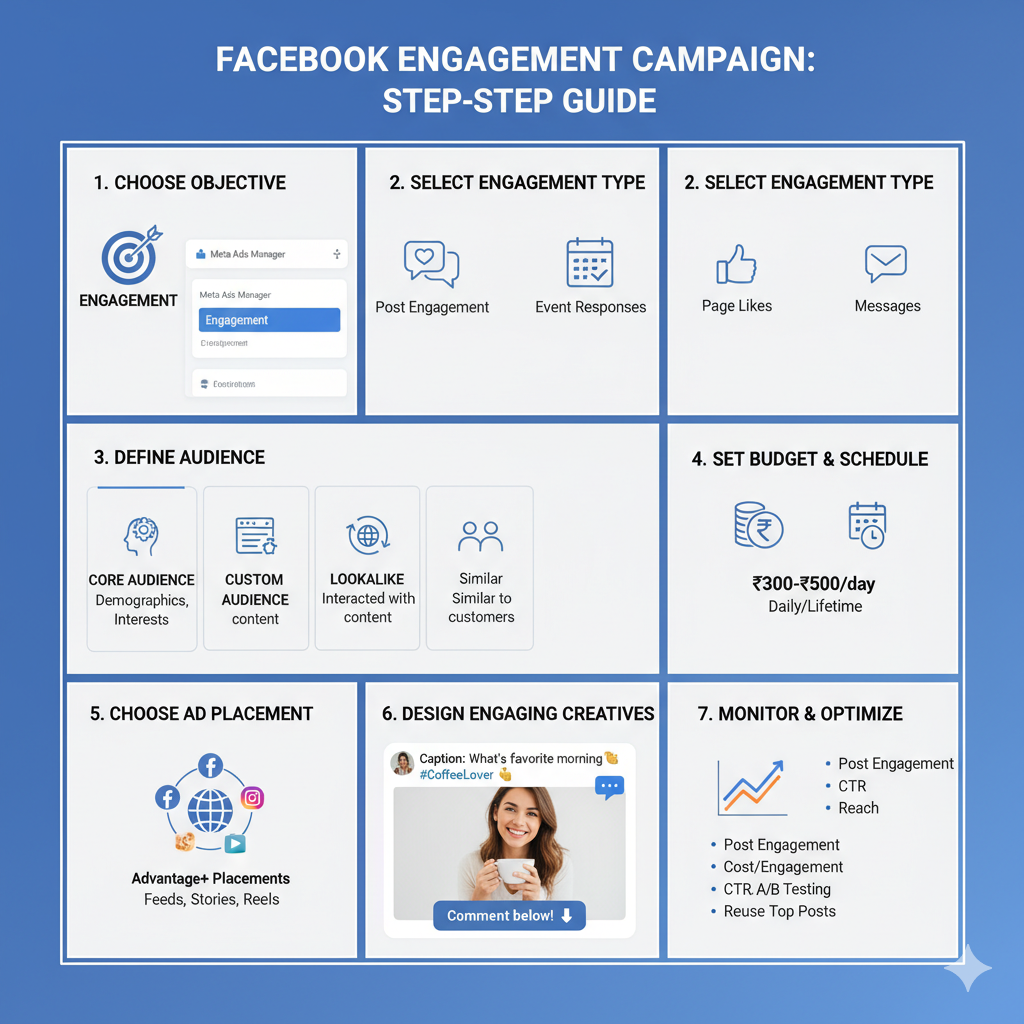Introduction

In the world of digital marketing, engagement is the heartbeat of social media success. Likes, comments, shares, and saves are not just vanity metrics — they represent real people connecting with your brand. Facebook’s Engagement Campaign is one of the most powerful tools in Meta Ads to build brand awareness, grow loyal communities, and strengthen audience relationships.
Whether you’re a small business, a content creator, or a digital marketer, understanding how to run and optimize engagement campaigns can transform your Facebook strategy.
What Is a Facebook Engagement Campaign?
A Facebook Engagement Campaign is a type of ad objective designed to encourage people to interact with your content — such as liking your post, commenting, sharing, clicking “Follow,” or sending a message.
When you choose the Engagement Objective in Meta Ads Manager, Facebook’s algorithm optimizes delivery to show your ad to users who are most likely to engage.
In simple terms:
“You’re not just paying for views — you’re paying for real interaction.”
Types of Engagement Campaigns on Facebook

Facebook offers several subcategories under the engagement objective. Each serves a unique purpose depending on your marketing goal.
1. Post Engagement
- Boosts interactions on your posts — likes, shares, comments, and saves.
- Increases the visibility of your content in users’ feeds.
- Ideal for promoting organic posts or testing content before scaling.
Example:
Promoting a new product photo or educational video to see which gets the most attention.
2. Page Likes
- Encourages users to like or follow your Facebook Page.
- Builds your audience base and long-term followers.
- Useful for businesses just starting on Facebook or rebranding.
Example:
A new fashion brand promoting its page to reach style-conscious youth.
3. Event Responses
- Promotes event attendance by showing ads to people likely to respond “Interested” or “Going.”
- Ideal for webinars, workshops, product launches, or community meetups.
Example:
A clinic hosting a “Free Health Checkup Camp” promoting its event through engagement ads.
4. Message Engagement
- Encourages users to start conversations with your business via Messenger, WhatsApp, or Instagram Direct.
- Excellent for lead generation, customer support, or sales inquiries.
Example:
A restaurant ad saying “Message us to book your table today!”
Why Facebook Engagement Campaigns Matter

Engagement campaigns are not just about numbers — they’re about building credibility, visibility, and trust.
1. Build Social Proof
When people see others engaging with your posts, it creates trust and curiosity. This social proof makes potential customers more likely to follow or buy.
2. Strengthen the Algorithm Signal
High engagement tells Facebook that your content is valuable. As a result, it gets prioritized organically, giving you more reach even without additional ad spend.
3. Nurture Community Relationships
Engagement campaigns help you start conversations, reply to comments, and humanize your brand.
4. Lower Future Ad Costs
When your content has strong engagement history, Meta’s AI learns faster and optimizes future ads at a lower cost per result.
How to Create a Facebook Engagement Campaign

Step 1: Choose Campaign Objective
In Meta Ads Manager, select Engagement as your campaign objective.
Step 2: Select the Engagement Type
Choose whether you want Post Engagement, Page Likes, Event Responses, or Messages.
Step 3: Define Your Audience
Use Core, Custom, or Lookalike Audiences:
- Core Audience: Based on demographics, interests, and behavior.
- Custom Audience: Re-engage people who already interacted with your content or website.
- Lookalike Audience: Reach people similar to your existing customers.
Step 4: Set Budget and Schedule
Decide between daily or lifetime budgets. Start small (₹300–₹500 per day) to test engagement rates.
Step 5: Choose Ad Placement
Allow Advantage+ Placements (automatic) to let Meta find the best-performing locations — Facebook Feed, Instagram Feed, Stories, or Reels.
Step 6: Design Engaging Creatives
- Use eye-catching visuals and short captions.
- Ask questions to spark conversation.
- Add emojis to make the tone friendly and relatable.
- Always include a call to action (CTA) like “Comment below” or “Tag a friend.”
Step 7: Monitor and Optimize
- Check metrics like Post Engagement, Cost per Engagement, CTR, and Reach.
- Test multiple ad creatives (A/B testing).
- Reuse your top-performing post for future campaigns.
Best Practices for Successful Engagement Campaigns
- Post Consistently: Maintain regular posting to stay visible.
- Use Videos and Reels: Visual content drives higher engagement than static images.
- Leverage Polls and Questions: Encourage audience participation.
- Respond Quickly: Replying to comments and messages improves trust and reach.
- Avoid Clickbait: Keep engagement genuine — Meta penalizes misleading tactics.
- Combine with Retargeting: Show follow-up ads to people who engaged with your page or post.
Measuring Engagement Campaign Success
Track the following KPIs (Key Performance Indicators):
- Engagement Rate (ER): Total engagement ÷ Total reach × 100
- Cost Per Engagement (CPE): Ad spend ÷ Total engagements
- Page Follows & Growth Rate
- Message Replies or Conversations Started
A high engagement rate and low CPE indicate strong ad performance.
Conclusion
Facebook Engagement Campaigns are more than just another ad type — they’re powerful relationship-building tools that play a crucial role in the broader Meta campaign ecosystem. As highlighted in the campaign summary chart, engagement ads sit at the middle of the marketing funnel, bridging the gap between awareness and conversion.
They help brands build trust, visibility, and community loyalty, paving the way for future sales and long-term success.
By applying the right creative strategy, audience targeting, and continuous optimization, you can transform simple likes, comments, and shares into meaningful relationships — and eventually, loyal customers.
Remember: In the Meta campaign structure, engagement is the first real step toward conversion. visit same cart for more information.